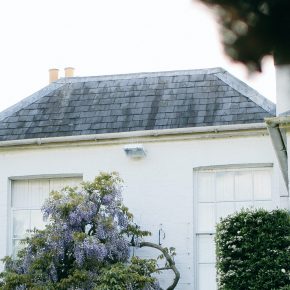
What are Roof Membranes?
Among the most important parts of your home is the roof overhead. Without a roof that functions well, the underlying building will rapidly deteriorate, and even become uninhabitable. Roof membranes play an important role in excluding water and ensuring the rest of the structure has protection. But exactly how are they made, and what function do they serve?
What makes a roof?
The average home in the UK has a pitched roof comprising several different components. Everything is built around a skeletal frame, usually made from timber. On top of this is placed a series of interlocking tiles, which distribute rainwater down into the guttering.
Beneath this is a waterproof roof membrane for added protection – a sheet of plastic acting as a barrier between the air inside the roof and the air outside.

What is a Roof Membrane?
Roof membranes come in several different types. There are breathable membranes and non-breathable ones. The former is favourable in most settings, as there is a perception that they eliminate the need for separate ventilation elsewhere. This is not always entirely accurate, and it’s still often necessary to include additional ventilation around the ridge and eaves.
The most breathable types of membrane today are ‘air open’ and ‘vapour permeable’. These represent the cutting edge when it comes to breathability, and are a result of extensive R&D on the part of the manufacturers. They’re especially useful in complex roofs, such as those found in extensions, skylight-equipped loft conversions, and heavily partitioned apartment buildings where there are many breaks in the roof, and reduced opportunity for ventilation.
Up to date guidelines can be found in British Standard BS 5250, which deals with the control of condensation in buildings.
How does a Roof Membrane Work?
The membrane’s job is to exclude external moisture from the underlying structure. While rainwater might not be able to directly pass through the tiles and into the roof, airborne droplets can find their way through. The membrane is placed on the ‘cold’ side of the insulation, and will allow moisture to pass from the inside to the outside, and still allow air to circulate below, limiting the likelihood of damp and other moisture-related problems.
How long do they last?
If a membrane doesn’t incur direct damage, it should last for several decades with minimal maintenance. It is, after all, just a large sheet of plastic. Therefore, it’s important to ensure the right sort of membrane is chosen at the outset.
Latest news

26th July 2024
Enfield Speciality Doors completes world-class project for Atlas Copco HQ
A rundown office and warehouse building completely transformed into a modern headquarters for Atlas Copco has been fitted with more than 120 internal fire doors from Enfield Speciality Doors.
Posted in Access Control & Door Entry Systems, Articles, Building Industry News, Building Products & Structures, Building Systems, Case Studies, Doors, Interior Design & Construction, Interiors, Posts, Restoration & Refurbishment, Retrofit & Renovation, Security and Fire Protection, Sustainability & Energy Efficiency, Timber Buildings and Timber Products, Wooden products
26th July 2024
Abloy UK launches new white paper
Abloy UK, a leading provider of security and access control solutions, has launched a new white paper.
Posted in Access Control & Door Entry Systems, Architectural Ironmongery, Articles, Building Industry News, Building Products & Structures, Building Services, Doors, Facility Management & Building Services, Health & Safety, Information Technology, Innovations & New Products, Publications, Research & Materials Testing, Security and Fire Protection
26th July 2024
MCRMA Member Profile: David Roy, Director of Roofconsult
David Roy of MCRMA member company Roofconsult has more than 50 years’ experience to draw upon working in the building envelope sector and a unique perspective on how it has changed in that time.
Posted in Articles, BIM, Infrastructure & CAD Software, Building Associations & Institutes, Building Industry News, Building Products & Structures, Building Services, Building Systems, Cladding, Information Technology, Restoration & Refurbishment, Retrofit & Renovation, Roofs, Walls
26th July 2024
Strand: Enhancing Door Functionality and Safety
Craig Fox, Sales Director for Strand Hardware, outlines how door industry professionals might apply door limiting stays…
Posted in Architectural Ironmongery, Articles, Building Industry News, Building Products & Structures, Building Services, Doors, Facility Management & Building Services, Health & Safety, Restoration & Refurbishment, Retrofit & Renovation
 Sign up:
Sign up: